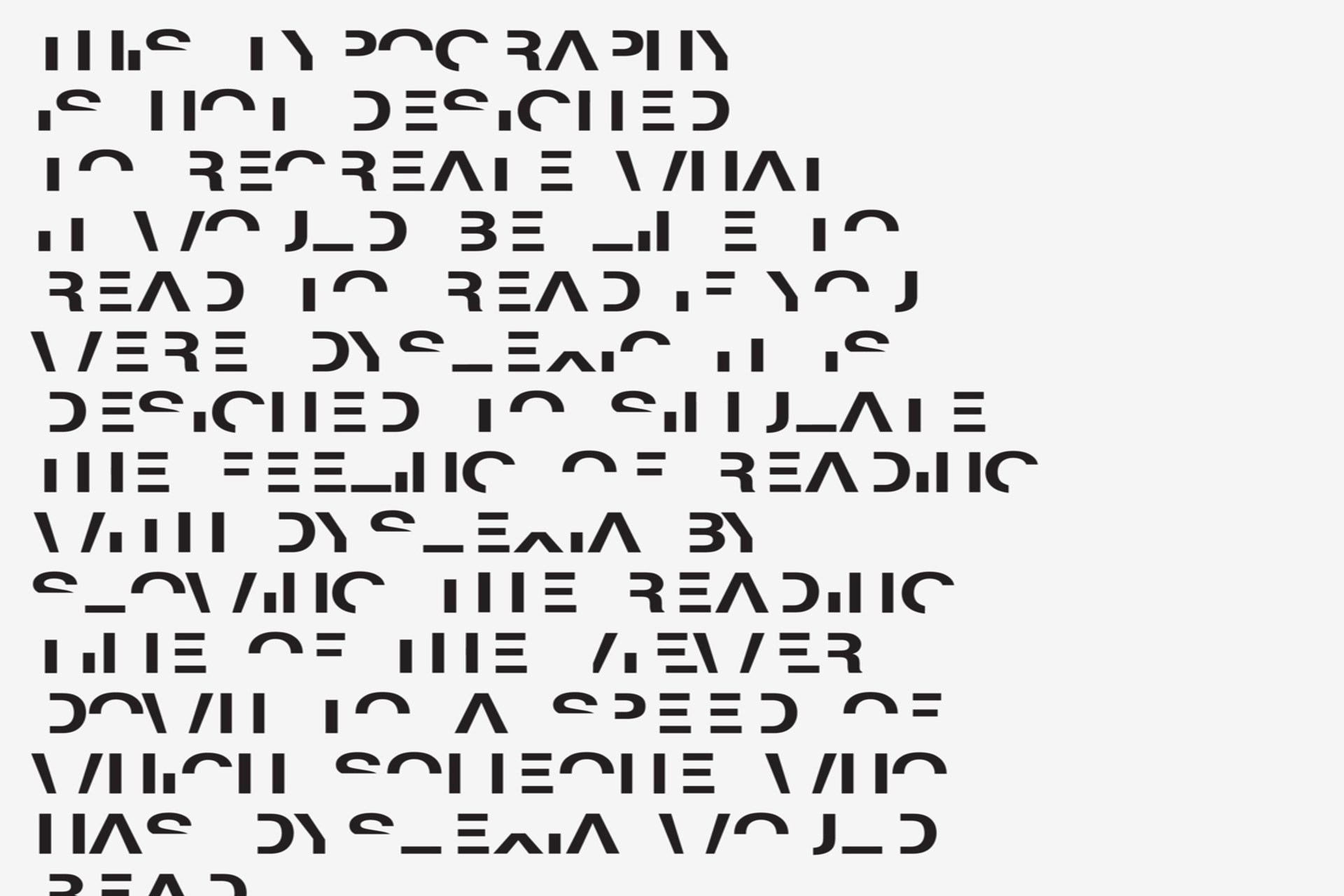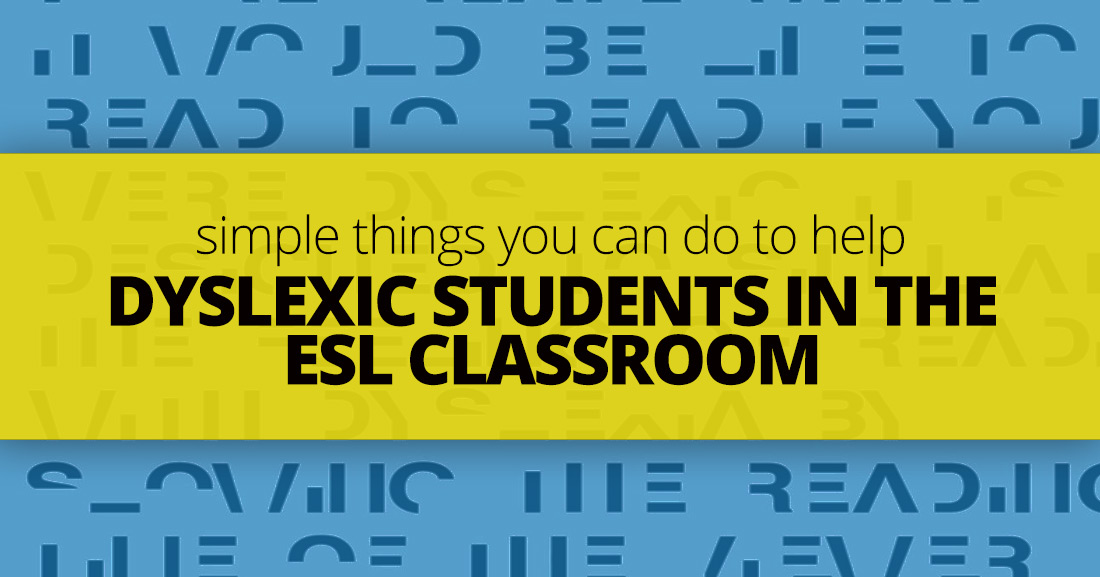Perhaps it is because a friend’s son was recently diagnosed with dyslexia, but I’ve seen a lot on the condition lately.
When it comes to dyslexia, the biggest challenge is for the person diagnosed with it. But dyslexia’s challenges go beyond individual learners. Teachers with dyslexic students in the classroom can and should make adjustments to their teaching to make learning easier for their students. Whether those teachers are reading teachers or science teachers, they should help their dyslexic students as much as they can. And that expectation doesn’t change when those dyslexic students are in the ESL classroom.
I hope that after reading this post, you will have a better understanding of what dyslexia is, how to recognize it in students, and how to make your classroom a more conducive place for learning when you have dyslexic students in the classroom. But enough of that for now. Let’s take a look at the condition and how it affects our students.
3 Tips for Successful Instruction of Students with Dyslexia
-
1
What Is Dyslexia?
Dyslexia is a brain condition in which the student has difficulty processing graphic symbols associated with language, aka reading. Dyslexia is not linked to intelligence or how effectively a person has been educated. Nor is it linked to upbringing. It is a neurological and sometimes genetic condition which causes the student to have trouble with reading and comprehension. A person with dyslexia will have the condition for life.

This font simulates what it's like to have dyslexia. Source
If you have a student with dyslexia, it’s not because they or you did anything wrong. It’s just how some people’s brains work. But there are things you can do to make learning easier for students with dyslexia.
-
2
How Can I Recognize Dyslexia?
You probably already know that reversed letters and numbers is a sign of dyslexia. Students with the condition often write letters in mirror image and cannot tell the difference between letters that are mirror images of each other such as b and d. But there are other more subtle symptoms of dyslexia that you should be aware of so you can recognize them in your students.
Sometimes the reversals are on a grander scale than just letters. Words can be reversed, and dyslexic students might struggle distinguishing between left and right. If you have a student struggling with these issues, you might want to keep close tabs on their reading and language skills. In addition, illegible handwriting can also be a sign of dyslexia as well as handwriting that varies in size.
The symptoms of dyslexia don’t just manifest in writing. They can also show up in reading. Skipping words and lines while reading can also be a symptom of the disorder. So if you have a student who drastically underperforms in reading comprehension, you might want to look into why they aren’t understanding what they read. If a student has difficulty following or remembering directions, it’s another reason to keep an eye on them to see if they exhibit any other symptoms of dyslexia.
The English language isn’t going to do you or your students any favors in the spelling department. Spelling in English is complicated, and sometimes it feels as though there are more exceptions than there are rules. But if you see inconsistent and/or unintelligible spelling from a student, it could also be a sign of dyslexia.
Just because a student displays some of these characteristics does not mean that they necessarily have dyslexia. The condition is best diagnosed by professionals with extensive experience with the disorder. But if you have a student who displays enough of these symptoms to make you wonder, it is probably worth seeking out a professional to do a more formal evaluation with that student.
-
3
How to Help Dyslexic Students in the Classroom
When you know or suspect that you have a student with dyslexia in your classroom, you can do some very simple things to support that student and increase his or her success with language learning.
Something as simple as using a larger font on handouts or writing bigger on your front board can be of assistance to dyslexic students. You can also use a font designed especially for assisting dyslexic individuals read more easily.
You should also make sure dyslexic students are sitting close to the board in your room and close to your desk.
On a daily basis, take time to review and ask questions about previously taught material before moving on to new topics. And be sure to keep a regular structure to your daily lessons, which will decrease stress in all of your students. Since stress can exacerbate the struggles dyslexic students have, keeping a routine in class will help them manage better with day to day tasks.
Dyslexic students may benefit from having more time to complete tasks in class, too. Give them the time they need. You might consider setting up some independent learning stations for other students in class who will take less time to complete those same tasks.
You may be tempted to simplify the content that you teach when you have a student with dyslexia. Don’t.
You may be tempted to simplify the content that you teach when you have a student with dyslexia. Don’t. A better option is to change your teaching strategy. Make sure you are appealing to all of the learning styles – aural/oral, visual, and kinesthetic. This will benefit not only your dyslexic students but everyone in your classroom. But it is especially important for supporting how your dyslexic students learn. Hands on learning can make a big difference for these students.
Most of all, use positive reinforcement for all your students and particularly your dyslexic students. While dyslexia can be frustrating and discouraging, it is a manageable condition for your students and for you. Try to be patient and encouraging to your student with dyslexia, and don’t be afraid to treat them differently from your other students by giving them more attention or designing your lessons to help them out.
If you have a student in class with dyslexia, they need your support and encouragement.
You can give it to them to be sure they are successful learners and effective speakers of the English language.
P.S. If you enjoyed this article, please help spread it by clicking one of those sharing buttons below. And if you are interested in more, you should follow our Facebook page where we share more about creative, non-boring ways to teach English.








